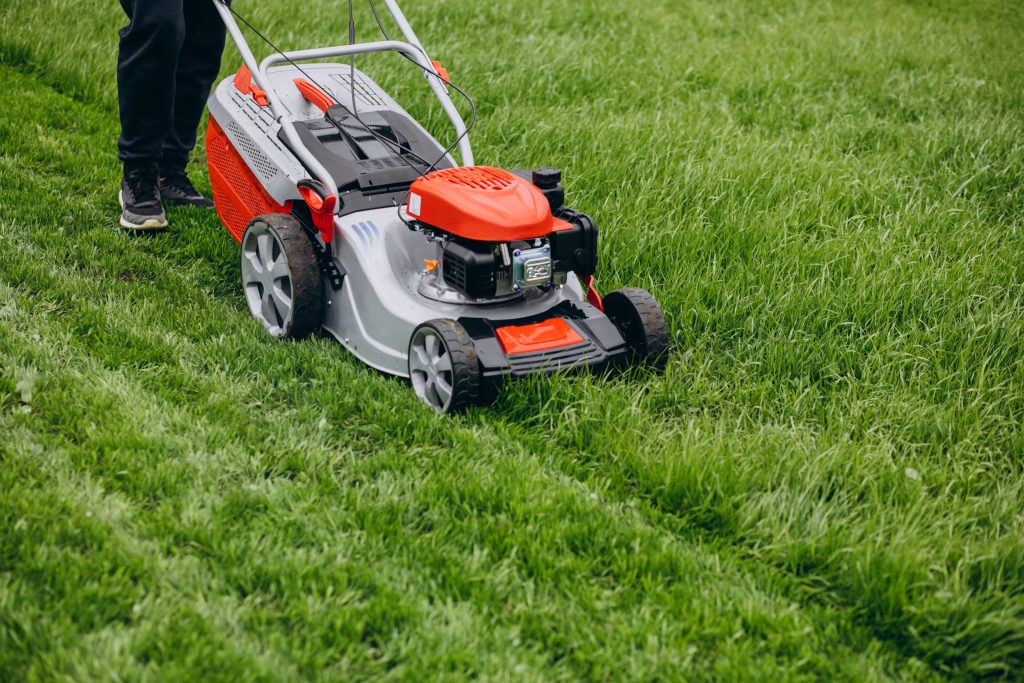Want to create a cleaner, safer, and more sustainable lawn that motivates your neighbors to do the same? Understanding eco-friendly lawn care practices can help you have a beautiful yard while still contributing to the environment. To keep your lawns lush and green, you must consider a few tactics, such as introducing native plants, mulching, and enhancing your lawn care regimen.
We at Audet Enterprises support sustainable and environmentally friendly lawn care methods. Here are some pointers to make sure your grass still looks fantastic and secure for kids, pets, and the ecosystem.
What is Eco-Friendly Lawn Care Practices
Eco-friendly lawn care practices prioritize sustainable approaches that maintain a lush, healthy lawn. By avoiding harmful chemicals like synthetic pesticides and fertilizers, this approach protects soil health and water quality while also safeguarding pets and wildlife. Implementing organic fertilizers, such as compost or natural alternatives, nurtures soil fertility and promotes balanced growth.
Adding native plants and xeriscaping techniques reduces water consumption, promoting drought resistance and biodiversity. Additionally, leaving grass clippings on the lawn recycles nutrients and reduces waste. Eco-friendly lawn care not only creates a vibrant outdoor space but also contributes to a greener, more sustainable future for generations to come.
Why are Eco-Friendly Lawn Care Practices Important
Almost every homeowner dreams of having a flourishing front yard with a gorgeous, lush lawn. There are numerous strategies to maintain your lawn in an environmentally responsible manner. Through these simple eco-friendly lawn care practices, you can lessen your environmental impact and improve the quality of the outdoor space.
- Environmental Protection — Traditional lawn care practices often involve the use of synthetic chemicals such as fertilizers, herbicides, and pesticides, which can have detrimental effects on soil health, water quality, and biodiversity. Eco-friendly lawn care minimizes or eliminates the use of these harmful chemicals, reducing pollution and protecting ecosystems.
- Soil Health — Healthy soil is essential for the growth of plants, including grass. Eco-friendly lawn care practices such as composting, aeration, and reducing chemical inputs help maintain soil fertility, structure, and microbial activity, supporting long-term plant health and resilience.
- Pollinator Habitat — Lawns maintained with eco-friendly practices, such as avoiding pesticides and planting native flowers, provide valuable habitat for pollinators such as bees and butterflies. Supporting pollinator populations is crucial for ecosystem health and food production.
- Reduced Chemical Exposure — Synthetic lawn care chemicals can pose risks to human health, especially children and pets who may come into contact with treated areas. By using eco-friendly lawn care practices, homeowners can reduce their exposure to potentially harmful chemicals and create safer environments for their families and pets.
- Sustainability — Eco-friendly lawn care promotes sustainable landscaping practices that minimize environmental impact while maintaining aesthetically pleasing outdoor spaces. By reducing resource consumption, minimizing waste, and supporting natural processes, eco-friendly lawn care contributes to a more sustainable way of life.
10 Key Elements of Eco-Friendly Lawn Care Practices
Implementing eco-friendly lawn care practices can contribute to a healthier, more livelier lawn and landscape. This approach typically involves reducing or eliminating the use of synthetic chemicals, minimizing water consumption, supporting biodiversity, and promoting soil health.
1. Organic Lawn Fertilization
Replace synthetic fertilizers with organic alternatives such as compost, manure, or natural soil amendments. These materials enrich the soil without introducing harmful chemicals, promoting healthier plant growth and microbial activity.
2. Water Conservation
Implement practices like xeriscaping, which involves using drought-tolerant plants and efficient irrigation methods to minimize water usage. Collecting rainwater in barrels and directing downspouts towards the lawn can further reduce reliance on municipal water sources.Integrated Pest Management (IPM)
Adopt IPM strategies that prioritize natural predators, beneficial insects, and cultural controls to manage pests and diseases. This reduces the need for chemical pesticides, preserves beneficial organisms, and minimizes environmental harm.
3. Mowing Techniques
Adjust mower blades to a higher setting to encourage deeper root growth and shade the soil, reducing evaporation and weed growth. Additionally, leaving grass clippings on the lawn as mulch provides nutrients and improves soil structure.
4. Native Plant Landscaping
Incorporate native plants into your lawn design. They are adapted to local climate conditions and require less water, fertilizer, and maintenance than exotic species. Native plants also provide habitat and food for local wildlife, promoting biodiversity.
5. Natural Weed Control
Instead of chemical herbicides, opt for natural weed control methods like hand-weeding or using organic weed control products. Mulching with materials like wood chips or straw can also suppress weed growth by blocking sunlight and conserving soil moisture.
6. Lawn Aeration
Regularly aerating the lawn improves soil structure, enhances root growth, and promotes better air and water circulation. This reduces soil compaction, allowing grassroots to access nutrients and water more effectively, leading to healthier turf that requires less fertilizer and water.
7. Natural Pest Deterrents
Utilize natural pest deterrents like garlic or chili pepper spray to repel common garden pests. Companion planting with pest-deterring plants like marigolds or basil can also help keep harmful insects at bay while attracting beneficial ones like pollinators.
8. Proper Irrigation
Water lawns in the early morning to minimize evaporation and fungal diseases. Install a rain gauge to monitor rainfall levels and avoid overwatering. Consider using drip irrigation or soaker hoses to deliver water directly to the root zone, reducing water waste and promoting deeper root growth.
FAQs

How can I transition to eco-friendly lawn care?
Transitioning to eco-friendly lawn care involves replacing synthetic fertilizers and pesticides with organic alternatives, implementing water-saving techniques, practicing proper mowing and irrigation, and choosing native plants that require less maintenance and resources.
Are there eco-friendly alternatives to chemical pesticides and herbicides?
Yes, there are several eco-friendly alternatives to chemical pesticides and herbicides, including natural repellents, beneficial insects, physical barriers, and cultural controls such as proper lawn maintenance and companion planting.
Can I still have a lush, green lawn with eco-friendly practices?
Yes, it is possible to have a lush, green lawn using eco-friendly practices. Organic fertilizers, proper watering techniques, soil enrichment, and selecting suitable grass varieties can help maintain a healthy lawn without relying on synthetic chemicals.
How can I deal with weeds and pests without using chemicals?
You can manage weeds and pests without chemicals by practicing techniques such as hand-weeding, mulching, promoting beneficial insects, using natural repellents like neem oil or garlic spray, and maintaining a healthy lawn ecosystem through proper soil health and biodiversity.
Conclusion
At Audet Enterprises, we take great care to ensure that our lawn care professionals are adequately trained to preserve your lush, green lawn and ensure safety protocol compliance. We hope these eco-friendly lawn care practices have provided you with some excellent suggestions for initiating environmentally conscious lawn maintenance. If you have questions about using the best methods possible to ensure a safe, healthy, and sustainable lawn, contact us today.


